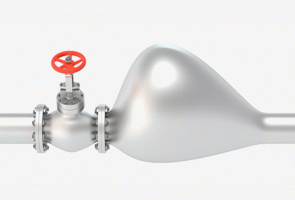Chances are you’ve heard from a friend, colleague, or online ‘guru’, that you have about three seconds to capture the attention of your audience. It includes page load time. Three seconds is not a lot of time to get your message across with images or copy; you’ll have to come up with something really creative to keep your readers glued to your website’s pages, like changing the way your copy ‘looks’ before they start reading.
Changing the way copy is presented
When you arrive at a website and click the menu item you are interested in, it isn’t unusual to find what looks like an essay divided into paragraphs on the target page. Studies suggest that a single reader will scan about 20-28% of the on-page copy, which means 70% of the space that essay occupied could have been put to better use.
More effective copywriting with content blocks
One very successful technique big companies have come to rely on is the use of content blocks. These blocks act as bait, drawing the reader deeper into the website. Typical examples include small blocks of copy on the home page giving information about individual services. These usually follow through to a page dedicated to a specific service. But even these second-level pages aren’t sufficient any more since they usually revert back to the old essay-style content.
Emerging best practices suggest separating existing content into easily consumable chunks of information. In plain English, it means one paragraph or section per idea.
Online film database IMDb makes perfect use of content blocks. It displays them vertically, presenting the most important information related to the search first, with a ‘See more’ link at the end of each section. The IMDb page for The Red Violin (image above) displays the top of the listing page. Already it’s easy to note that the first content block displays topical information about the film. As you scroll down, other sections appear, each with a link to more information. Notice how it makes it easier to get information about the film while using a minimal amount of space per section?
Google’s Google Analytics page uses a different layout, but does the same with content blocks, making it possible for readers to get the information they require without having to sift through paragraphs of content.

Interesting to note here is that Google uses multiple content levels. On the Analytics front page, beneath "Measurement tools for your business", readers can "Learn more" by clicking the link in any of the three blocks. On the next page, the content has been placed in sections rather than paragraphs. To the right of the content there’s another ‘Learn more’ section, which delves even deeper into the content hierarchy.
How to get started
Think you don’t have enough content? Think again. Even small websites with extremely basic products and services can create content hierarchies that make information easier to consume. The format of a typical hierarchy can be summed up in three basic stages:
1. Overview
2. General Information
3. Detailed information
A legal firm, for example, can start with small content blocks related to the main services on their front page. Each of these small blocks link to a page dedicated to the topic of that content block – a page that contains more information, like who, what, where, and how much. Next, if the audience is still interested, they can ‘Learn more’ on a next page where the exact modus operandi of the firm has been laid out, preferably in sections.
How you divide your content depends on the information you have, and what your audiences expect. The benefit of this approach is that, in addition to keeping your readers bound, it also provides you with a bit more scope for additional product information, which is great for SEO. Whichever way you look at it, the net result is that more of your content gets consumed and you increase your chance for conversion. An additional plus is that the copywriting services you invested in is now paying off in full.
